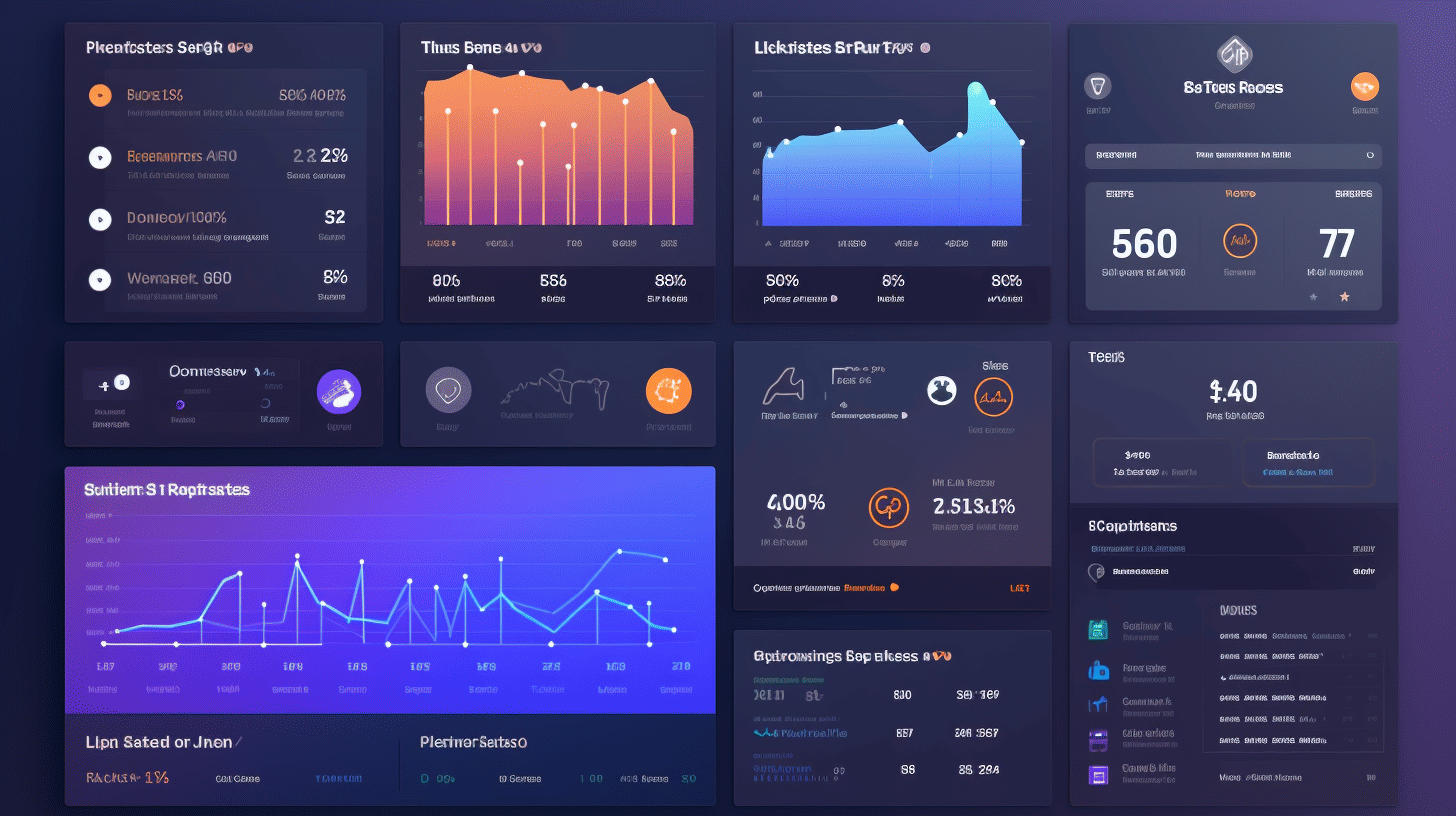在当今快节奏的数字环境中,管理网站可能是一项耗时的任务。从保持内容最新到确保最佳安全性,责任清单似乎永无止境。然而,对于 WordPress 用户来说有一个好消息——自动化已经成为一种强大的解决方案,可以简化网站管理并减轻与之相关的一些负担。
有了现成的自动化工具,网站所有者现在可以高效地处理各种任务,同时节省宝贵的时间和资源。无论是更新插件和主题、备份数据还是优化搜索引擎内容,自动化都提供了一系列好处,可以大大简化管理流程。
在本文中,我们将探讨 WordPress 中的自动化概念,了解其重要性,并深入探讨其对网站管理的影响。我们还将讨论一些流行的自动化工具,并提供有关有效实施自动化策略的见解。
因此,如果您已准备好了解自动化如何彻底改变您的网站管理体验,那就让我们立即开始吧!🚀
了解 WordPress 中的自动化
效率是管理网站的关键,尤其是涉及可自动化的任务时。这就是 WordPress 自动化发挥作用的地方。在本文中,我们将深入探讨自动化的定义、重要性以及自动化如何提高 WordPress 网站的效率。
定义和重要性
WordPress 中的自动化是指使用工具和插件简化网站上的重复任务和工作流程的过程。它允许您设置规则和触发器来自动执行某些操作,从而节省您的时间和精力。
那么为什么自动化在 WordPress 中如此重要?以下是几个原因:
- 节省时间: 通过自动执行任务,您可以腾出时间专注于管理网站的更重要方面。您可以让自动化为您处理这些任务,而不必花费数小时手动执行日常任务。
- 一致性: 通过自动化,您可以确保任务一致且无错误地执行。这降低了人为错误的风险并提高了网站的整体质量。
- 提高生产力: 自动化可让您在更短的时间内完成更多工作。通过自动执行重复任务,您可以提高工作效率并在相同时间内完成更多工作。
- 增强用户体验: 自动化有助于改善网站访问者的体验。例如,您可以设置自动电子邮件回复以提供即时支持或根据用户互动发送个性化消息。
自动化如何提高效率
自动化可以显著提高 WordPress 网站各个领域的效率。让我们看一些例子:
内容发布
通过自动化,您可以简化在 WordPress 网站上发布内容的过程。以下是自动化如何提高内容发布的效率:
- 预计发布时间: 您可以安排博客文章、视频或其他类型的内容在特定日期和时间自动发布。这样就无需手动发布每条内容,从而可以创建一致的发布时间表。
- 内容分发: 自动化工具可以帮助您自动在社交媒体平台上分享已发布的内容,从而节省您向更广泛的受众推广内容的时间和精力。
用户管理
管理 WordPress 网站上的用户可能非常耗时,尤其是在用户群庞大的情况下。自动化可以帮助简化用户管理流程:
- 用户注册: 通过自动化,您可以设置自动用户注册和帐户创建。如果您正在运营在线课程、会员网站或任何其他类型的社区网站,这将特别有用。
- 电子邮件通知: 自动化工具可让您根据特定触发条件(例如帐户激活、密码重置或订阅续订)向用户发送自动电子邮件。这有助于让用户随时了解情况并参与其中,而无需人工干预。
网站维护
维护 WordPress 网站涉及定期更新、备份和安全检查。自动化可以简化这些任务:
- 更新: 自动化工具可以处理 WordPress 核心、主题和插件的更新。这可确保您的网站始终使用最新的安全补丁和功能。
- 备份: 可以安排自动备份定期运行,确保您的网站数据得到安全备份。这有助于防止数据丢失,并在需要时更轻松地恢复您的网站。
- 安全扫描: 自动化工具可以执行定期安全扫描,以检测 WordPress 网站上的任何漏洞或恶意软件。这可以帮助您主动识别和解决任何潜在的安全问题。
总之,WordPress 中的自动化提供了许多好处,从节省时间到提高生产力和用户体验。通过利用自动化工具,您可以简化重复任务,提高效率并专注于扩大您的在线影响力。请继续关注我们下一节关于 WordPress 最佳自动化工具的内容!🚀
自动化对网站管理的影响
想象一下这样一个世界:您可以让网站更新、内容安排、备份、垃圾邮件管理,甚至搜索引擎优化都自动运行。听起来像是一个梦想,不是吗?好吧,借助自动化的力量,这个梦想可以变成现实。
在本文中,我们将探讨自动化可以彻底改变网站管理的各种方式。从保持网站更新和安全到确保高质量内容的稳定流动,自动化可以改变游戏规则。那么,让我们深入了解一下自动化如何改变您管理网站的方式。
管理更新
您知道让您的网站使用最新的插件、主题和 WordPress 核心版本非常重要。但是,手动检查更新、安装更新并测试兼容性可能是一项耗时的任务。这时,自动化就可以派上用场了。
通过利用自动化工具,您可以简化管理更新的过程。这些工具可以帮助您:
- 跟踪插件、主题和 WordPress 核心的可用更新。
- 在您的网站流量较少或活动较少的特定时间安排自动更新。
- 运行兼容性检查以确保更新不会破坏您的网站。
通过自动化,您可以告别手动更新的烦恼,享受始终运行最新、最安全版本的网站。
内容安排
一致性是向受众提供内容的关键。然而,找到时间定期创建和发布内容可能很困难。这就是自动化的用武之地。
自动化工具可让您提前安排帖子和页面,这样您就不会错过内容策略中的任何环节。以下是自动化如何改变内容安排:
- 提前规划好您的内容日历,确保帖子稳定发布,无需承受最后一刻发布的压力。
- 即使您不在电脑旁,也可以在特定的时间和日期自动发布内容。
- 通过安排在战略时间间隔重新发布现有内容来重新利用现有内容,从而吸引新的受众并最大化其影响力。
通过自动化处理内容安排,您可以专注于创建吸引和取悦观众的高质量内容。
自动备份
您网站数据的安全性和保密性绝不能受到损害。定期备份对于防止因事故、黑客攻击或服务器故障而导致的数据丢失至关重要。但是,手动执行备份可能很繁琐,而且很容易被遗忘。
自动化再次通过自动备份解决方案来拯救我们。这些工具可以:
- 自动定期安排备份,确保您的数据安全且最新。
- 将备份存储在本地和云端的安全位置,以增加冗余。
- 提供紧急情况下一键恢复选项,让您的网站快速启动并运行。
有了自动备份,您就可以放心,因为您知道您宝贵的网站数据是安全的。
垃圾邮件和安全管理
没有人喜欢处理垃圾邮件或担心网站的安全性。不幸的是,这些都是网站所有者的日常担忧。幸运的是,自动化可以减轻这些麻烦,并确保您的网站不受垃圾邮件侵扰且安全。
自动垃圾邮件检测和安全管理工具可以:
- 扫描收到的评论并过滤掉垃圾邮件,从而节省您的时间和精力。
- 检测潜在的安全漏洞并自动执行定期安全检查。
- 阻止恶意 IP 地址和已知威胁,保护您的网站免受攻击。
通过自动化处理垃圾邮件和安全管理,您可以专注于创造积极的用户体验和建立您的在线形象,而不必不断担心垃圾邮件或安全漏洞。
搜索引擎优化
提高网站在搜索引擎上的可见度对于推动自然流量至关重要。然而,实施有效的 SEO 实践可能很复杂且耗时。这时自动化可以提供帮助。
自动化工具可以协助完成以下 SEO 任务:
- 生成 XML 站点地图并将其提交给搜索引擎,确保您的网站被正确编入索引。
- 分析您网站的性能,识别 SEO 问题并提出优化建议。
- 自动优化页面标题、元描述和图像 alt 标签以提高搜索引擎排名。
通过自动化处理 SEO 任务,您可以优化您的网站以适应搜索引擎并吸引更多的自然流量,而无需成为 SEO 专家。
自动化正在彻底改变网站管理,使其比以往任何时候都更轻松、更高效。从简化更新和安排内容到增强安全性和优化搜索引擎,自动化工具正在改变网站所有者的游戏规则。拥抱自动化,让它在您的网站管理工作流程中发挥魔力。您的网站和您的安心将感谢您!
WordPress 自动化工具可简化网站管理
在当今快节奏的数字环境中,管理 WordPress 网站可能非常耗时且繁重。从更新插件到安排内容,有许多任务需要持续关注。幸运的是,有强大的自动化工具可以简化网站管理流程,让您的生活更加轻松。
自动更新工具💡
保持 WordPress 网站最新对于安全性和性能至关重要。手动更新插件和主题可能很繁琐且耗时,尤其是当您管理多个网站时。这时自动更新工具就派上用场了。它们会为您处理更新过程,确保您的网站始终运行最新版本的插件、主题和 WordPress 核心。
以下是一些流行的自动更新工具:
- 管理WP: 这个综合管理平台可让您从单个仪表板自动更新多个网站。它还提供备份和安全功能,以确保您的网站安全。
- 喷气背包: Jetpack 以其功能丰富的插件而闻名,它提供了自动 Jetpack 插件更新功能。此工具不仅可以让您的 Jetpack 插件保持最新状态,还可以处理其他 WordPress 核心更新。
专业提示: 使用 ManageWP,您可以自定义自动更新设置以确保兼容性并防止可能出现的任何潜在冲突。
调度工具 ⏰
持续发布新内容对于吸引受众和提高搜索引擎排名至关重要。但是,找时间创建和发布内容可能很困难,尤其是当您的日程繁忙时。这时,日程安排工具就派上用场了。
这些工具可让您提前规划和安排内容,从而节省时间并确保一致的发布时间表。以下是一些值得考虑的调度工具:
- 共同日程: CoSchedule 是一款功能强大的编辑日历工具,它还允许您安排和自动发布内容。它与 WordPress 无缝集成,让您可以轻松地从仪表板创建和安排帖子。
- Hootsuite: Hootsuite 主要以社交媒体管理工具而闻名,但它也提供安排 WordPress 博客文章的功能。这可让您在一个平台上简化内容创建和分发流程。
备份管理工具📂
作为网站所有者,拥有可靠的备份系统至关重要。意外随时可能发生,拥有最新备份可确保您的数据即使在发生灾难性故障时也能保持安全。备份管理工具简化了备份 WordPress 网站的过程,确保您拥有网站文件和数据库的副本。
以下是一些流行的备份管理工具:
- UpdraftPlus: UpdraftPlus 是一款功能强大的备份和恢复插件,可让您自动将计划备份到远程位置(例如 Dropbox、Google Drive 或 Amazon S3)。它还提供紧急情况下的简单恢复选项。
- VaultPress: VaultPress 由 WordPress 背后的团队 Automattic 开发,可为您的 WordPress 网站提供自动备份和实时安全扫描。凭借其简单的设置和直观的界面,您可以放心,您的网站已完全备份。
安全工具🔒
确保 WordPress 网站的安全至关重要。网络威胁和黑客攻击的增多使得采取强有力的安全措施变得至关重要。幸运的是,有许多自动化工具可以帮助增强 WordPress 网站的安全性。
一些流行的安全工具包括:
- Wordfence: Wordfence 是一款广泛使用的安全插件,提供恶意软件扫描、防火墙保护和暴力攻击预防等强大功能。它还提供实时流量监控和潜在安全威胁警报。
- 苏库里: Sucuri 以其业界领先的网站安全服务而闻名,它为 WordPress 提供了全面的安全插件。它包括恶意软件扫描、DDoS 保护和网站完整性监控等功能。
SEO工具🚀
改善网站的搜索引擎优化 (SEO) 对于推动自然流量和提高在线知名度至关重要。有专门设计的自动化工具可帮助您针对搜索引擎优化 WordPress 网站。
以下是一些值得考虑的 SEO 工具:
- Yoast SEO: Yoast SEO 是 WordPress 最受欢迎的 SEO 插件之一,可帮助您优化内容以获得更好的搜索引擎排名。它提供实时分析、XML 站点地图生成和其他功能来改善您网站的 SEO。
- SEO新闻: SEOPress 是另一个功能强大的 SEO 插件,提供与 Yoast SEO 类似的功能。它允许您轻松管理元标记、监控断开的链接和生成 XML 站点地图。
通过利用自动化工具的强大功能,您可以简化 WordPress 网站管理并专注于真正重要的事情 - 提供有价值的内容并扩大您的在线影响力。利用这些工具,您的网站管理任务将变得更加高效和富有成效!
如何在 WordPress 网站上实现自动化
您是否厌倦了花费无数时间在 WordPress 网站上执行重复任务?自动化就是答案!通过实施自动化策略,您可以简化网站管理、节省时间并提高效率。在本文中,我们将逐步探讨如何在 WordPress 网站上实施自动化的过程。
了解您的网站需求
在深入研究自动化之前,清楚了解网站的具体需求至关重要。花点时间评估您当前的工作流程,并确定哪些任务占用了您大部分的时间。您是否经常更新插件、发布博客文章或管理用户注册?通过找出这些痛点,您可以确定自动化可以在哪些方面发挥最大的作用。
一旦确定了自动化的关键领域,您就可以开始选择最适合您需求的工具。
选择正确的工具
由于可用的自动化工具种类繁多,为您的 WordPress 网站找到合适的工具可能是一件令人不知所措的事情。但是,通过考虑您网站的具体要求,您可以缩小选择范围。以下是 WordPress 网站所有者使用的一些流行自动化工具:
- 喷气背包:这个综合插件提供了一系列自动化功能,例如自动社交共享、备份、安全扫描和垃圾邮件防护。
- 吧:如果您在 WordPress 网站上经营在线商店,WooCommerce 提供各种自动化选项,包括库存管理、订单处理和电子邮件通知。
- 扎皮尔:Zapier 是一个强大的集成平台,它允许您连接不同的应用程序并自动执行它们之间的操作。它通过流行的 WordPress 插件(如 Mailchimp 和 Gravity Forms)提供了广泛的自动化可能性。
请记住,在安装任何新工具之前,请务必检查评论、评级和与 WordPress 版本的兼容性,以确保顺利集成。
正确的工具设置
为网站选择了合适的自动化工具后,就该正确设置它们了。请按照以下步骤确保无缝实施:
- 通过您的 WordPress 仪表板安装所选的插件或集成工具。
- 根据您的要求配置设置,密切关注任何可用的自定义选项。
- 设置触发器和操作以自动执行特定任务。例如,您可以设置触发器以自动在社交媒体平台上分享新博客文章或在用户注册时向用户发送电子邮件通知。
确保在设置后彻底测试每个自动化流程,以确保其正常运行。
监控和调整您的自动化策略
与 WordPress 网站的任何方面一样,自动化策略需要监控和调整以确保最佳性能。密切关注自动化任务,以确保它们按预期执行。此外,收集用户反馈并分析数据以确定需要改进的领域。
定期检查并调整您的自动化工作流程,以适应网站需求的任何变化或您选择的工具提供的新功能。
通过不断监控和调整您的自动化策略,您可以确保 WordPress 网站管理的效率和有效性。
🌟 在 WordPress 网站上实施自动化可以节省您的时间、减少重复任务并提高整体生产力。通过了解您网站的需求、选择合适的工具、正确设置它们并监控它们的性能,您将顺利获得完全自动化的网站管理体验。准备好释放自动化的力量并享受更简化的 WordPress 之旅吧!🚀
结论
总之,WordPress 中的自动化改变了网站管理。通过利用自动化的力量,网站所有者可以简化其运营,提高效率并增强整体性能。从管理更新和安排内容到确保备份和处理安全性,自动化简化了通常耗时且复杂的任务。
借助合适的自动化工具(例如 Managed-WP™ 提供的工具),网站所有者可以体验到简化和优化的 WordPress 网站带来的好处。Managed-WP™ 提供优质的托管 WordPress 云托管平台,可处理技术方面的问题,让用户专注于数字体验。凭借专家全天候问题解决支持,Managed-WP™ 可确保用户安心无忧,获得顺畅的网站管理体验。
使用 Managed-WP™ 实现自动化并充分发挥 WordPress 网站的潜力。提升您的网站管理能力,享受专注于最重要的事情的自由 - 创造卓越的在线体验。立即探索自动化的强大功能 managed-wp.com.
常见问题
- 自动化如何帮助简化 WordPress 上的网站管理?
WordPress 上的自动化功能可以自动执行内容发布、社交媒体共享、备份、更新和安全扫描等重复性任务,从而帮助简化网站管理。它节省时间和精力,提高效率,并减少出现错误或疏忽的机会。
- WordPress 有哪些流行的自动化插件?
一些流行的 WordPress 自动化插件包括:1. Jetpack、2. UpdraftPlus、3. WP Scheduled Posts、4. Social Warfare 和 5. iThemes Security。这些插件提供各种自动化功能,以简化网站管理。
- 在 WordPress 上使用自动化是否存在任何风险或缺点?
虽然自动化可以极大地帮助网站管理,但谨慎行事也很重要。过度自动化可能会导致失去个性化、减少自定义选项并增加出现技术问题的可能性。请仔细评估您所需的自动化功能并明智地使用它们。
- 自动化插件可以完全取代手动网站管理任务吗?
虽然自动化插件可以处理许多日常任务,但它们无法完全取代手动网站管理。始终需要人工监督和干预,尤其是在内容创建、战略决策和个性化用户体验方面。
- 如何为我的 WordPress 网站选择正确的自动化插件?
考虑您特定的网站管理需求和目标。寻找能够提供您所需功能、拥有积极用户评价、定期更新、良好支持以及与您使用的其他工具集成的自动化插件。测试和评估插件,确保它们能够增强而不是阻碍您的网站管理流程。



















